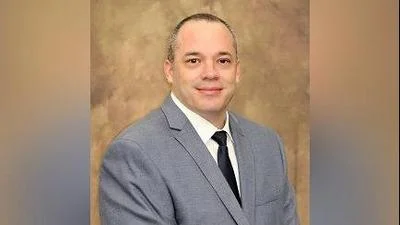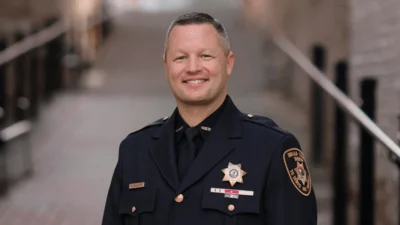DeKalb County Planning and Zoning Committee met March 23.
Here are the minutes provided by the committee:
The Planning and Zoning Committee of the DeKalb County Board met at 6:30 pm in the DeKalb County Legislative Center, Gathertorium, in Sycamore, Illinois. In attendance were Committee Members: Tim Bagby, Steve Faivre, John Frieders, Jerry Osland, Roy Plote, and Craig Roman, and Community Development Department staff: Derek Hiland and Marcellus Anderson. Also in attendance were: Brian Gregory, DeKalb County Administrator; Liam Sullivan, Administrative Analyst for DeKalb County; John Lyon; James Hutcheson; John Lageman; Brad Belanger, representing the Concerned Citizens for DeKalb County (CCFDC); Linda Tim; Katherine Andraski; and Tim Hakes.
Call to Order / Roll Call
Mr. Faivre, Planning and Zoning Committee Chair, called the meeting to order. Mr. West had arranged to call into the meeting, but the call-in never occurred.
Approval of Agenda
Mr. Roman moved to approve the agenda, seconded by Mr. Frieders, and the motion carried unanimously.
Approval of Minutes
Mr. Bagby moved to approve the minutes of the February 23, 2022 Planning and Zoning meeting, seconded by Mr. Plote, and the motion carried unanimously.
Public Comments
Brad Belanger distributed a copy of a statement prepared by the CCFDC regarding changes they wished to see made to the Solar Energy Systems (SES) regulations, which he also indicated had been emailed to the Committee members and staff. He noted that the statement did not include any comments about drainage since the Committee had already noted that those issues would be addressed. He then gave a summary of the contents of the statement.
Tim Hakes indicated that he supported changing the SES regulations, and that he supported the statement submitted by the CCFDC.
John Lyon read a statement he prepared, indicating: the support of him and his family for the statement prepared by the CCFDC; their dissatisfaction with the County Board’s actions regarding setbacks for SES, accusing the Board of not adequately protecting non-participating land owners; and their dissatisfaction with the current screening requirements for SES. He then distributed copies of the statement to the Committee.
Linda Tim read a statement prepared by her, in which she and her husband indicate their support of the statement submitted by the CCFDC, and shared some of her concerns regarding how SES will impact her property. She then gave staff a copy of her statement.
Catherine Andraski read a statement she prepared outlining the negative impacts she felt would occur from SES being allowed to build in the agricultural areas of the County. Her position also supported the revisions suggested in the statement submitted by the CCFDC. She then distributed copies of her statement.
John Lageman read a statement in which he indicated his support of the revisions recommended by the CCFDC in their statement, specifically highlighting those items he was most concerned about, and iterating additional concerns he had. He then distributed a copy of his position and indicated that it had also been emailed to the Committee and staff.
Old Business -
none
New Business – Solar Energy Systems Regulations
Mr. Faivre noted his appreciation of the outline provided by Mr. Hiland in the Committee’s packet. He then asked if staff had anything to add to the discussion. Mr. Hiland noted that he would add “battery storage” as a discussion item to his previous outline, and then gave a PowerPoint presentation regarding information he had gathered thus far, which included: a listing of solar ordinances developed by neighboring counties; discussed some options as to how to utilize the grounds underneath the array panels; noted that many ordinances in the Midwest were requiring plantings be pollinator friendly; showed other styles of fencing, beyond the standard chain-link, which were being used for arrays that are better suited for farmland; provided some aerial pictures of some existing SES in other areas; provided some pictures of the different types of storage batteries being used, noting that some of the arrays placed them within the array and others along the outside of the array; presented a listing of the criteria used by the County to approve the existing SES in the County; and finished by playing a short video of the installation o a SES facility. Mr. Faivre inquired whether Mr. Hiland could upload his presentation to the County website, and Mr. Hiland responded that he would.
Mr. Frieders inquired whether the storage batteries were fan cooled or not. Mr. Hiland responded that he did not know for sure, but believed that they might be. Mr. Osland responded that they were.
Mr. Frieders inquired as to how many batteries would be needed for a 2-megawatt SES. Mr. Hiland estimated that probably one or two of the units shown in his presentation would be needed, but he did not know for sure. Mr. Hiland noted that he and his colleagues around the State were currently working on determining the impacts and potential dangers of these storage batteries, and that he was also going to start looking at out-of-state resource for more information. Mr. Frieders commented that the technology for storage batteries appeared to be available, but inquired whether it was being utilized in Illinois as yet. Mr. Hiland responded that it did not appear to be used in state as yet, but that it was being looked at by some companies. He noted that Winnebago County had been approached for a stand-alone battery facility, not associated with any particular SES facility. He also noted that in talking to developers, he believed their intention long term is to make use of storage batteries, and that any approved thus far have been as an accessory use to an approved SES facility.
Mr. Frieders inquired whether the counties current regulations allow for storage batteries. Mr. Hiland commented that if an existing facility wanted to add them, it would require a revision to the Special Use Ordinance approving that facility. If an SES approached the County with one included, it could be included as part of their special use. He added, however, that a stand-alone battery facility would likely require a text amendment to the County Code to allow them.
Mr. Plote noted that in southern Illinois a stand-alone battery was being proposed for a county which had no ordinance in place yet. He noted that the Committee needed to inquire from the developers whether the batteries had to be at the SES site or if they could be placed next to the transformer substation instead, and explained why he felt it would be better to do so. He also noted that West Virginia and Wisconsin already have such stand-alone facilities.
Mr. Hiland noted that he inquired with the County Assessor about how such storage batteries would be taxed, and noted that she learned that from the State that there was currently no different formulas specific to such uses, as have been established for wind towers and SES. And, that these uses would be taxed based on the equipment inside and the structure itself, like any other accessory use.
Mr. Faivre inquired whether Mr. Hiland had any recommended order in which the Committee should address the items on his outline. Mr. Hiland responded that it was fine to address them as listed or in whatever order they pleased.
Mr. Faivre noted that he envisioned the County website as a repository for all of the information that has been gathered, and to show examples of what has already exists in the ordinance, so that people can see what has already been done. Mr. Hiland agreed that a dedicated spot on the website was a good idea.
Mr. Faivre noted that it will take time to get through the list, and inquired whether Mr. Hiland wanted any changes recommended by the Committee sent to him. Mr. Hiland responded that would be a good idea, and welcomed feedback.
Mr. Faivre noted that he felt the definitions looked pretty good as is. Mr. Hiland noted that in some other ordinances he had reviewed had many more definitions in them. Mr. Faivre noted that he felt staff should go through the list of definitions and give any recommendations they have at the next meeting. He added that any recommendations regarding dimensional regulations could be included too.
Mr. Faivre noted that Committee’s goal was to have the matter ready to send to public hearing in August.
Mr. Osland commented on some of the potential issued regarding storage batteries that needed to be addressed. Mr. Frieders agreed that storage batteries were going to be a big deal.
Other Business
None
Adjournment
Mr. Osland moved to adjourn the meeting, seconded by Mr. Plote, and the motion carried unanimously.
https://dekalbcounty.org/wp-content/uploads/2022/04/minutes-pz-02232022.pdf





 Alerts Sign-up
Alerts Sign-up